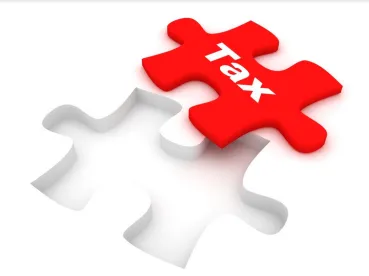On December 22, 2017, President Trump signed the Tax Cuts and Jobs Act into law. One of the most publicized changes made by the TCJA was the creation of the 20% qualified business income ("QBI") deduction under new Section 199A of the Internal Revenue Code. This provision generally permits the owners of certain pass-through businesses, such as sole proprietorships, partnerships, limited liability companies and S-corporations, to deduct 20% of their share of the business’ QBI in determining their personal U.S. income tax liability. The deduction is subject to limitations based on the amount of W-2 wages paid by the business, the amount of qualified depreciable property owned by the business, whether the business is a "specified service trade or business", and the owner’s taxable income.
On August 8, 2018, the IRS released proposed regulations (the "Proposed Regulations") which address and clarify many of the unanswered questions left by the statutory language of Section 199A. The Proposed Regulations are organized into six sections which include computational, definitional and anti-abuse guidance regarding the application of Section 199A. The following are some of the important highlights of the Proposed Regulations:
1. Qualified Business Income. For purposes of calculating the QBI deduction, QBI is limited to business income from a qualifying trade or business. The Proposed Regulations provide guidance regarding the calculation of QBI, including the requirement to exclude wages, partner guaranteed payments, Section 1231 income that is treated as capital gain, and interest income on working capital. The Proposed Regulations also state that the QBI deduction does not reduce net earnings from self-employment or income subject to the 3.8% net investment income tax.
In addition, the Proposed Regulations rely on the IRC Section 162 standard for determining whether an activity constitutes a "trade or business" under Section 199A (i.e., the activity must be conducted with "continuity and regularity" and with the primary purpose of earning income or making a profit). While meeting the Section 162 standard may prove challenging for certain rental real estate professionals, the Proposed Regulations state that the renting or licensing of tangible or intangible property between commonly controlled businesses (at least 50%) will automatically be treated as a Section 162 trade or business.
2. Wages and Basis of Qualified Depreciable Property. If a an owner’s taxable income exceeds a certain threshold amount ($157,500 for single filers and $315,000 for joint filers), the owner’s 20% QBI deduction is generally phased out in favor of the owner’s allocable share of the greater of (i) 50% of W-2 wages paid by the business, or (ii) 25% of W-2 wages paid by the business plus 2.5% of the unadjusted basis of qualified depreciable property (the "W-2 wage limitation"). The Proposed Regulations permit wages paid by third-party payors (such as professional employer organizations) to count toward the the owner’s W-2 wage limitation if the wages are paid on behalf of the business generating the QBI.
With regard to determining the unadjusted basis of qualified depreciable property, the Proposed Regulations provide guidance on determining this basis, including situations in which the property is contributed to a partnership or S-corporation, inherited, acquired as replacement property in a like-kind exchange or involuntary conversion, or improved.
3. Specified Service Trades or Businesses. Section 199A provides a list of specified service trades or businesses ("SSTB") that are not treated as qualifying trades or businesses. Owners of an SSTB do not benefit from any QBI deduction once their taxable income exceeds $207,500 (single filer)/$415,000 (joint filer). The Proposed Regulations clarify the business activities that constitute SSTBs and provide guidance regarding businesses that are treated as SSTBs because the principal asset of the business is the reputation or skill of its employees or owners (the "catch-all" provision). Furthermore, the Proposed Regulations include a de minimis rule whereby an otherwise qualifying business (i) with no more than $25MM of gross receipts will not be treated as an SSTB if less than 10% of its gross receipts are derived from an SSTB, and (ii) with more than $25MM of gross receipts will not be treated as an SSTB if less than 5% of its gross receipts are derived from an SSTB.
4. Aggregation. A taxpayer-favorable rule found in the Proposed Regulations is the ability to aggregate certain businesses together for purposes of calculating the QBI deduction. Aggregation is permitted, however, only if (i) none of the businesses is an SSTB, (ii) the same owners own a majority interest (at least 50%) in the businesses, and (iii) the businesses satisfy at least two of the following factors: (a) the businesses provide services or products that are customarily offered together, (b) the businesses share facilities or significant business functions, or (c) the businesses operate in coordination with, or reliance on, each other. Aggregation may prove beneficial by allowing related businesses to share amounts under the W-2 wage limitation and netting of income and losses for purposes of calculating the overall QBI deduction.
5. Anti-Abuse Provisions. The Proposed Regulations strike down a number of tax planning strategies that were publicized following the enactment of Section 199A specifically to take advantage of the QBI deduction. One commonly discussed strategy is referred to as the "crack and pack," whereby a business owner splits off business functions that would not independently be treated as an SSTB (the "crack") and puts them into a separate pass-through entity (the "pack") to generate QBI. For example, a medical practice (an SSTB) could consider owning medical equipment and the medical billing function in a separate entity that leases the equipment and provides the billing function to the medical practice for a fee. It was thought that the lease and fee income might be considered QBI. The Proposed Regulations target this strategy by providing that the separated business will be treated as an SSTB if it shares common ownership with the SSTB (at least 50%) and provides 80% of its property or services to the SSTB.
Individuals have also considered reclassifying themselves as independent contractors rather than employees to convert wages that are not treated as QBI into compensation that is treated as QBI. To prevent this, the Proposed Regulations state that the individual will continue to be treated as an employee absent a showing that he is performing work as other than an employee under tax and legal principles.
Another suggested tax planning idea is the creation of multiple trusts to circumvent the taxable income limitations described in Section 199A ($157,500/$315,000). To eliminate this strategy, the Proposed Regulations state that multiple trusts that have the same grantors and substantially the same primary beneficiaries will be treated as a single trust under Section 199A if the principal purpose for establishing the trusts or contributing additional cash or property to the trusts is the avoidance of federal income tax.
In addition, the Proposed Regulations disallow the inclusion of depreciable property in the 2.5% calculation (see Paragraph 2 above) if the property is purchased within 60 days of the end of the taxable year and disposed of within 120 days unless the property has been used in the taxpayer’s business for at least 45 days prior to disposition. A taxpayer may rebut this disallowance by demonstrating that the acquisition and disposition of the property was for a purpose other than to increase the W-2 wage limitation (and therefore the QBI deduction).
6. Treatment of Trusts. Consistent with their income tax treatment generally, the Proposed Regulations state that all income, deductions, gains, losses and credits of a grantor trust will be taxed to the grantor. For non-grantor trusts, QBI is determined at the trust-level for purposes of determining whether the 20% deduction is available. If the trust exceeds the taxable income threshold and makes a distribution to the beneficiary, the W-2 wage limitation is allocated between the trust and the beneficiary in proportion to the income retained and distributed by the trust.
7. Reporting. The Proposed Regulations require pass-through entities (partnerships, LLCs and S corporations) to determine whether they are SSTBs and to provide each owner with information regarding his or her allocable share of QBI, W-2 wages and unadjusted basis of qualified depreciable property.
The Proposed Regulations provide welcome and helpful guidance on a number of open questions raised following the enactment of Section 199A. Unfortunately, the Proposed Regulations also leave a number of unanswered questions for taxpayers who may be eligible for the 20% QBI deduction. The anti-abuse provisions of the Proposed Regulations are proposed to apply to taxable years ending after December 22, 2017 (the date of enactment of the TCJA) while the remaining provisions are proposed to apply to taxable years ending after the Proposed Regulations are finalized.
The Proposed Regulations state that they may be relied upon, in their entirety, pending the issuance of final regulations. However, before relying on the Proposed Regulations, taxpayers should be aware that the Proposed Regulations do not have the force of law and do not necessarily reflect what the IRS’s position will be in any final regulations issued under Section 199A once additional public comments have been received.




 />i
/>i
